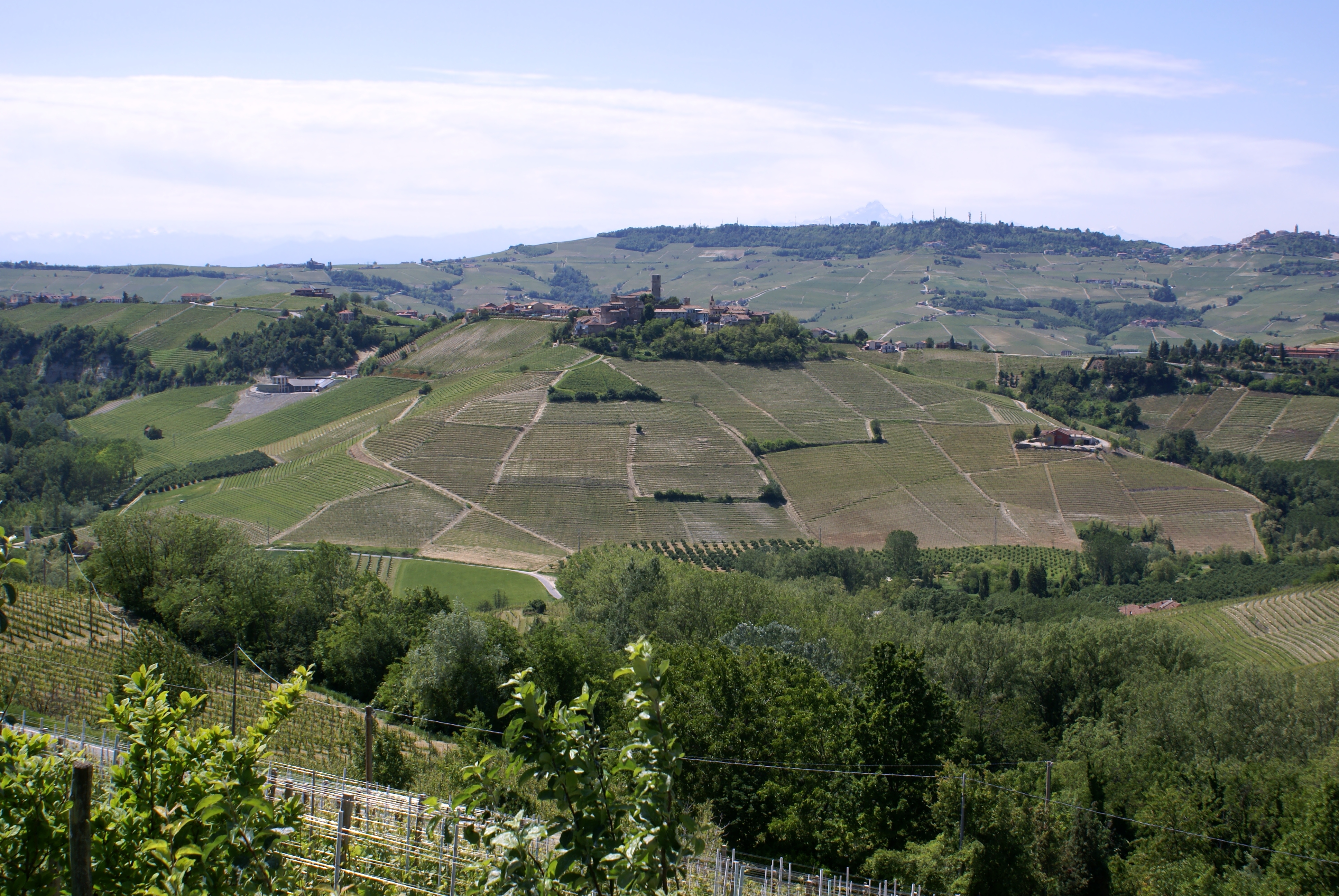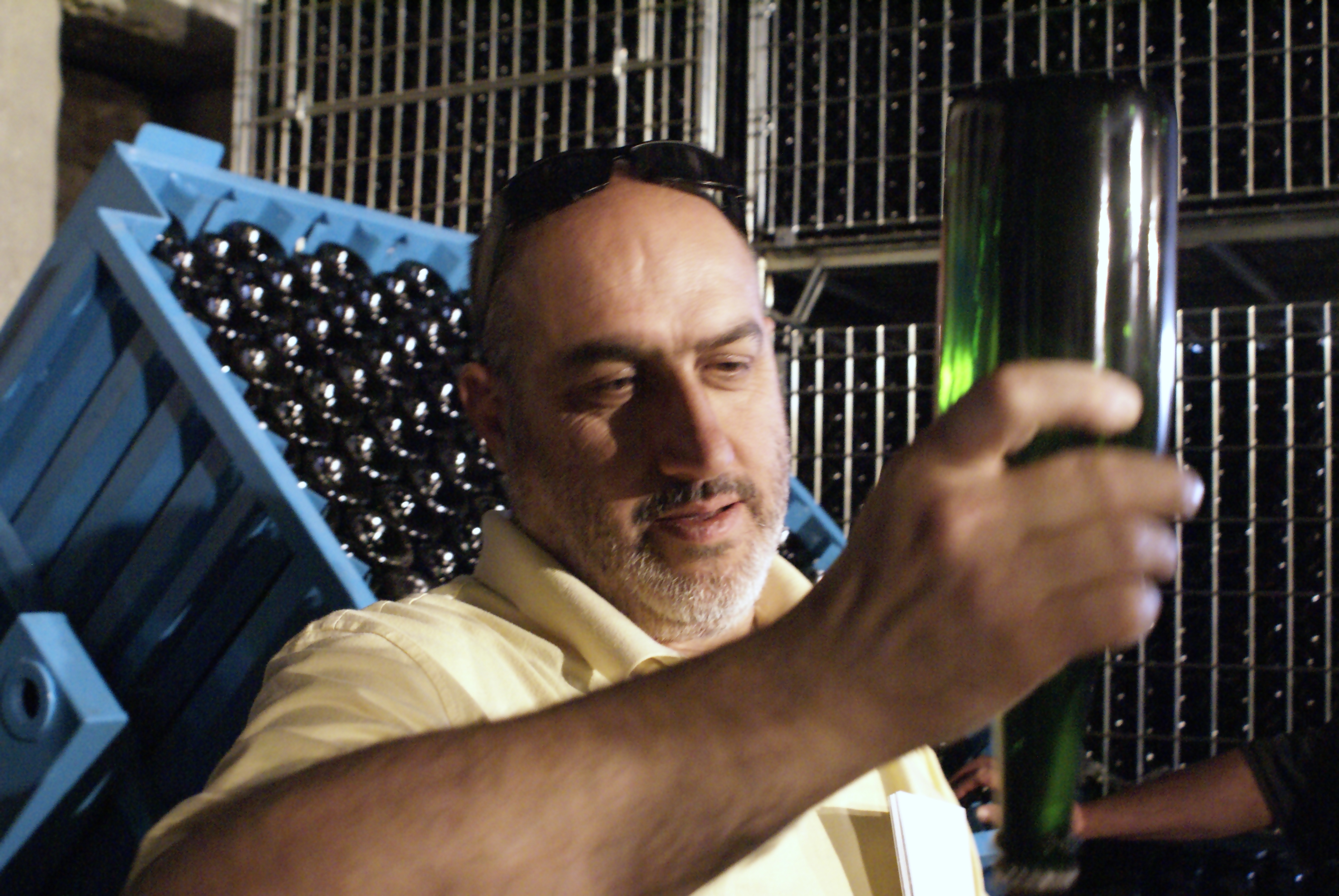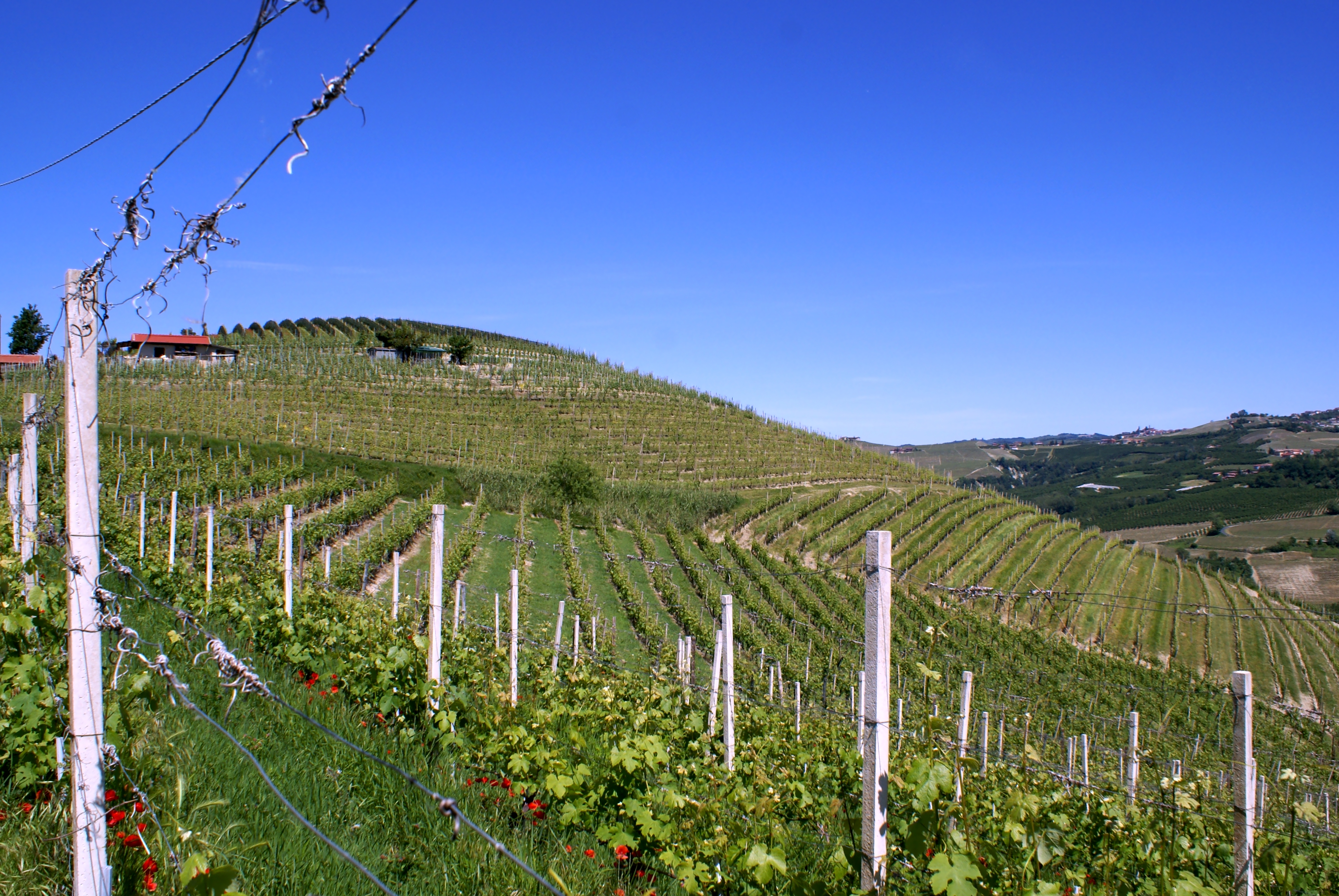Ettore Germano: the inquiring mind
Posted on 22 May 2012
[See my Nebbiolo Prima 2012 index page]
I meet a lot of brilliant people during my wine travels. And I came to think it is man, not terroir, that sets the difference between good wine and great wine. Great terroir doesn’t guarantee great wine; on the other hand, an intelligent, dedicated individual will make extraordinary wine even from a lesser vineyard.

Castiglione Falletto seen from the Meriame vineyard in Serralunga. Below the town is Vigna Scarrone.
Not that the Barolo vineyards of Serralunga d’Alba could be termed ‘lesser’; in fact I just qualified them in my last post of the true grands crus of the region. But a lot of ordinary wine is being made here, as my Friday flight of 35 samples testified. Prapò, Cerretta or Lazzarito on the label give you a ground for optimism, but it’s the name of the producer which is a quality warrant in itself.
The name of Ettore Germano surely is. These wines have consistently delivered the highest quality for the last decade. So a meeting with Sergio Germano was sure to deliver some vinous delights. But what struck me was Sergio’s neverending quest for perfection. Nothing is taken for granted, and his insatiable thirst for experimentation is impressive. In an hour and a half at the winery I not only tasted the usual selection of Dolcetto, Barbera, Nebbiolo and Chardonnay but also Riesling, Sauvignon Gris, the indigenous Nascetta, a Champagne-like Pinot & Chardonnay blend, and even a Syrah. None of these was a dud, but that’s secondary; by planting and micro-vinifying a single oak cask of Syrah Sergio Germano’s restless mind is continuously asking questions and seeking answers.
Nebbiolo, as it is, is no gift from God; it is a botanical crossing of ancient grapes that developed spontaneously in the vineyard maybe 300 or 400 years ago. Today we consider Nebbiolo one of the greatest grape varieties in the world, and Barolo its ideal habitat; but 300 years from now Nebbiolo might well be gone. It might become too hot for it; it may fall prey to a yet-unknown disease. Perhaps Syrah might turn out to be a perfect replacement. If so, Sergio Germano will already have precious data points when the need occurs.
A 2011 Nascetta (see my previous article on this rare grape) from tank was structured, concentrated and slightly tannic. A 2011 old-vine Barbera, aged in top-drawer Adour oak (a cooper that’s rarely talked about) has a stunning acidic backbone. The 2009 Syrah was an interesting take on the grape, wood-driven but with fine tannins and nice plumpness. A rosé champenoise of Nebbiolo showed the grape at its most frivolous and ethereal (though it’s very acidic). The 2007 Alta Langa was a very, very good sparkling wine from an unexpected terroir. The 2005 Sauvignon Fumée (an experimental batch of 12 bottles!) had nice café au lait agedness but plenty of freshness. Most amazingly of all, Germano’s 2011 and 2010 Riesling Hérzu, a fantastically poised, pithy but also melony and pineappley rendition of this quirky grape; a dead ringer for a blind tasting of Rhine Rieslings, it might well be the best I’ve tasted from Italy, period.
And that’s even before we tasted the Barolos. Do you prefer the blackcurrant jam richness of the 1997 Cerretta and the fat black olive and smoked bacon earthiness of the 2000 Prapò (both hot years) or the subdued strawberry complexity of the 2001 Prapò and the almost oily texture and the rational Renaissance architecture of the 2004 Cerretta (both cooler years)? Cerretta sees a bit of new oak, Prapò only stays in traditional large Balkan oak because it is by nature a slightly leaner, more elegant wine.
There’s also the Riserva Lazzarito, from 80-year-old vines, to reconcile the two above; tightly tannic and finely acidic it also has more balsamic sweetness and a sense of accomplishment. I tried the 2005, approachable today if you like a large-scale Mahlerian symphony, and the 2009, as aggressive as modern twelve-tone music, but the crystalline grain of tannins of that wine echoed in my head long after leaving the Germano cellar. This is a man-made wine, but Nature has helped quite a bit; Sergio Germano’s restless mind might well take a repose now.
Disclosure
My trip to Piedmont including flights, accommodation and wine tasting programme is sponsored by the Albeisa association of wine producers.




